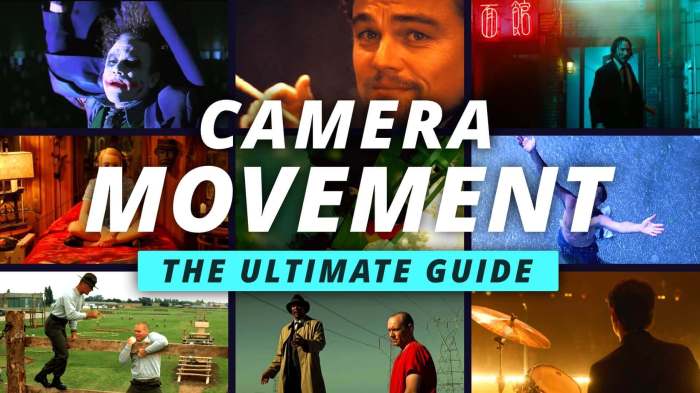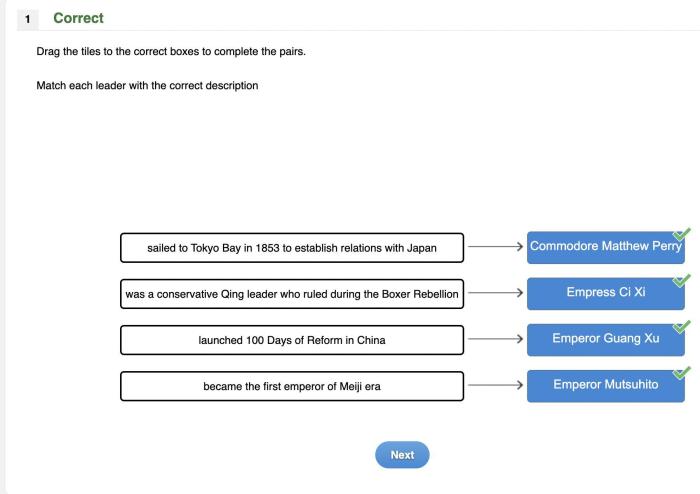Match Each Film Movement to Its Contemporaneous Historical Event. The connection between film movements and contemporaneous historical events is a fascinating and complex one. Historical events have a profound influence on the development and characteristics of film movements, shaping their aesthetics, themes, and social commentary.
This article will explore the relationship between film movements and historical events, examining how specific historical contexts have influenced the emergence and evolution of different film movements. We will also provide a table listing notable film movements and their corresponding historical events, along with specific examples of films that exemplify the connection between the two.
Film Movements and Historical Events: Match Each Film Movement To Its Contemporaneous Historical Event.

Film movements, as distinct artistic and cultural phenomena, are profoundly influenced by the historical events that shape their time. These events provide the social, political, and cultural context that shapes the perspectives, themes, and aesthetics of films within a particular movement.
The connection between film movements and historical events is evident in the way that films reflect the concerns, anxieties, and aspirations of the society in which they are made. During times of social upheaval, for example, films often grapple with issues of inequality, injustice, and the search for identity.
Conversely, periods of prosperity and stability tend to produce films that celebrate escapism, romance, and the pursuit of personal fulfillment.
Notable Film Movements and Their Historical Contexts
| Film Movement | Historical Event | Influence on Film Movement | Example Films |
|---|---|---|---|
| German Expressionism | World War I | Exploration of psychological trauma, alienation, and the subconscious | The Cabinet of Dr. Caligari (1920), Metropolis (1927) |
| Italian Neorealism | World War II and its aftermath | Focus on everyday life, poverty, and the struggles of ordinary people | Rome, Open City (1945), Bicycle Thieves (1948) |
| French New Wave | Post-World War II disillusionment and cultural change | Experimental storytelling techniques, focus on personal relationships | Breathless (1960), The 400 Blows (1959) |
| New Hollywood Cinema | Vietnam War and social unrest | Departure from traditional Hollywood conventions, exploration of taboo subjects | Easy Rider (1969), Bonnie and Clyde (1967) |
Case Studies: In-Depth Analysis
German Expressionism
German Expressionism emerged in the aftermath of World War I, a period marked by political turmoil, social upheaval, and a profound sense of disillusionment. The movement’s films, such as The Cabinet of Dr. Caligari and Metropolis, reflected the psychological trauma and alienation experienced by the German people.
They employed distorted sets, exaggerated lighting, and stylized acting to create a nightmarish and unsettling atmosphere.
These films explored themes of madness, violence, and the struggle between good and evil, reflecting the anxieties and fears of a society grappling with the aftermath of war.
Italian Neorealism
Italian Neorealism arose in the aftermath of World War II, a period of economic devastation and political instability in Italy. The movement’s films, such as Rome, Open City and Bicycle Thieves, depicted the everyday struggles and resilience of ordinary people living in poverty and hardship.
These films used non-professional actors, shot on location, and employed a documentary-like style to create a sense of authenticity and immediacy. They explored themes of social inequality, unemployment, and the search for hope amidst despair.
Comparative Analysis: Film Movements Across Time, Match each film movement to its contemporaneous historical event.
German Expressionism and New Hollywood Cinema
German Expressionism and New Hollywood Cinema, despite being separated by several decades, share some striking similarities. Both movements emerged during periods of social and political upheaval, and both sought to break away from traditional filmmaking conventions.
German Expressionism’s exploration of psychological trauma and alienation resonated with the disillusionment and anxiety of post-World War I Germany. Similarly, New Hollywood Cinema’s departure from traditional Hollywood conventions and exploration of taboo subjects reflected the social unrest and cultural change of the Vietnam War era.
However, there are also significant differences between the two movements. German Expressionism’s use of stylized sets and exaggerated acting created a nightmarish and unsettling atmosphere, while New Hollywood Cinema tended towards a more realistic and naturalistic approach.
Frequently Asked Questions
What is the relationship between film movements and historical events?
Historical events provide the context and inspiration for filmmakers to create works that reflect the social, political, and cultural issues of their time.
How do historical events influence the development of film movements?
Historical events can influence the development of film movements by shaping their aesthetics, themes, and social commentary.
Can you provide an example of a film movement that was influenced by a historical event?
The Italian Neorealism movement was influenced by the social and economic upheaval of post-World War II Italy.

